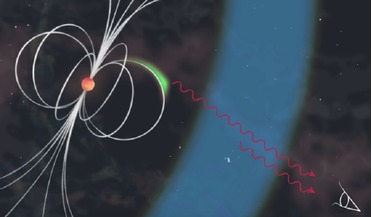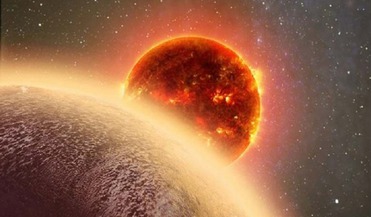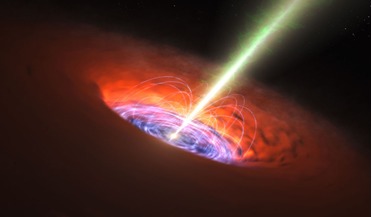 13 January 2016
High-energy theory models questioned as neutron star produces most energetic pulsed emission radiation ever detected
13 January 2016
High-energy theory models questioned as neutron star produces most energetic pulsed emission radiation ever detected
...Earth and is thus responsible for the pulsed appearance of the emission, generally observed to consist of radio and X-ray beams. This type of radiation is traditionally thought to originate within the magnetosphere. Conversely, the TeV beams observed...
 02 March 2016
Using MUSCLES to test for life on other planets
02 March 2016
Using MUSCLES to test for life on other planets
... this task, is a team of international astronomers headed by Kevin France, who have undertaken a panchromatic study – from the X-ray to mid-IR – of the spectral energy distributions (SEDs) of 11 nearby planet hosting low-mass stars (stars with masses...
 28 April 2016
Rocket Launch from Russia's Vostochny Cosmodrome Successful
28 April 2016
Rocket Launch from Russia's Vostochny Cosmodrome Successful
...'s objective is the observation of gamma-ray bursts, high-energy cosmic rays and transient phenomena in the Earth's ...radiated by EAS (Extensive Air Showers) of Ultra High Energy Cosmic Rays (UHECR) in the earth atmosphere as well as for transients’...
 08 October 2018
A round-up of news from this years IAC
08 October 2018
A round-up of news from this years IAC
... partners, NASA and the Japan Aerospace Exploration Agency (JAXA) agreed to strengthen ties on the development of the X-Ray Imaging and Spectroscopy Mission (XRISM) that is scheduled to blast off in 2021 on a JAXA H-2A rocket; XRISM is being built...
 07 June 2019
First-ever image of cool gas disk surrounding Milky Way's black hole
07 June 2019
First-ever image of cool gas disk surrounding Milky Way's black hole
... known about it except that it was there. Its presence was also given away by radiation, but instead of X-rays, the hydrogen atoms in this nebulous ring of material give off radio waves - millimetre wavelength radiation that...
 26 July 2019
Three massive black holes caught in the act of merging
26 July 2019
Three massive black holes caught in the act of merging
...light to be emitted as high-energy radiation such as gamma-rays and x-rays, and the output can be so bright it makes the ... comprehensive new observations with the Hubble Space telescope, Chandra X-ray, and the Very Large Array (VLA) located in central...